“S Music Note” as a search or “S above a Music Note”, appearing like a sideways S on top of music notes, is a symbol in musical notation representing a “turn”.
This symbol is a directive for musicians to perform a sequence of notes around a primary note. When encountering this symbol, musicians typically play the note above or below the marked primary note, then return to the primary note itself.
The execution of this sequence, known as a turn, adds complexity and ornamental value to the music, enhancing its overall expressiveness.
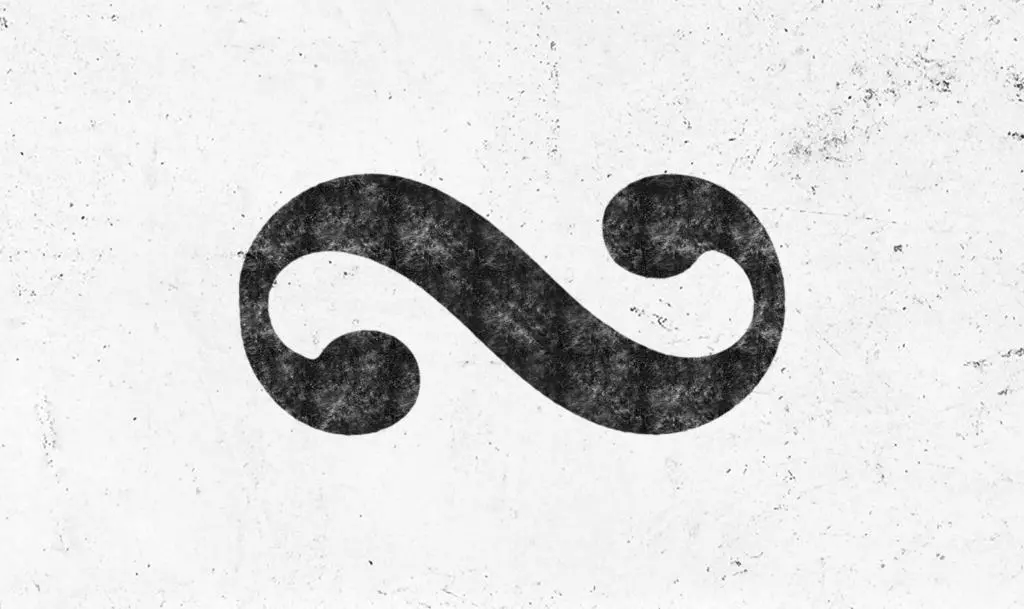
What is Sideways S Music Symbol? Table of Contents
Whether you’re a musician puzzling over sheet music, a composer seeking to enhance your melodies, or a student hoping to master musical notation, you’ve likely come across an intriguing symbol that resembles a sideways “S” hovering mysteriously above the musical staff. This cryptic marking is known as the turn or gruppetto, a small but mighty ornament that can add a touch of magic to your musical creations.
What Does the ‘Sideways S’ Symbol Represent in Musical Notation?
At first glance, the sideways S may seem like an indecipherable scribble. However, to those “in the know”, this symbol conveys a specific directive to perform a rapid sequence of notes surrounding a central main note. It’s a compact notation that signals the musician to briefly depart from the main melody in favor of a delicate and decorative musical detour.
Decoding the “S Music Note” Question: Turn and Gruppetto Briefly Explained
A turn creates an ornate “swirl” in the music, involving a total of four notes played in swift succession: first to the note above the main one, down to the main note itself, then dipping below, and finally circling back upward to the tonic once again. This fleeting melodic flourish injects a dose of surprise, complexity and sophistication into the melody.
Turns and their close cousins, mordents, originated in the elaborate compositions of the Baroque era, with extensive use by Bach, Handel and other early masters. Over time, these ornaments evolved into a versatile source of melodic embellishment across musical genres and styles.
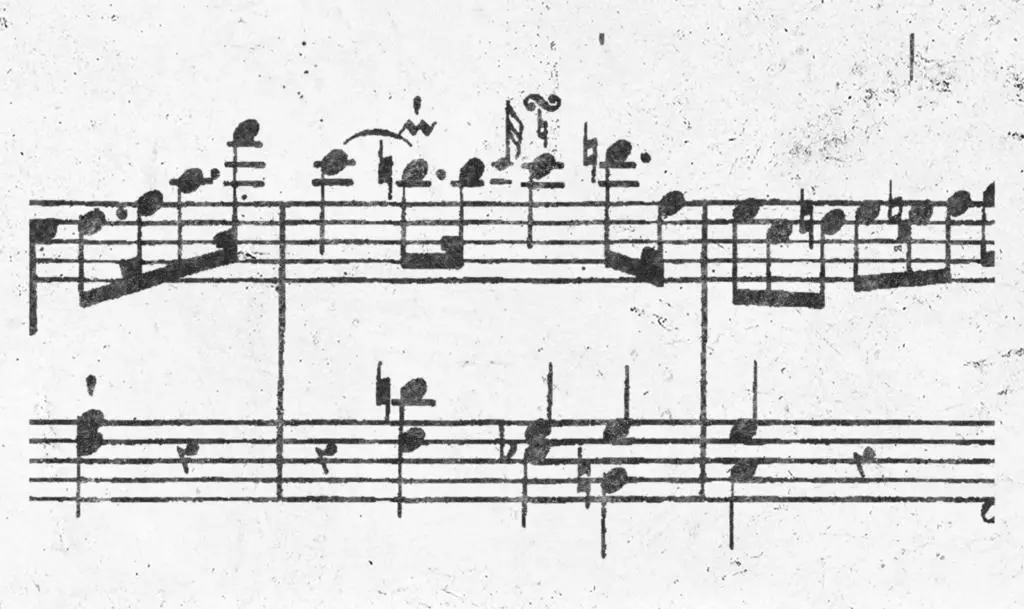
So what exactly is the purpose of this blog post? Whether you want to decipher turns in existing sheet music, utilize them more effectively in your own compositions, or simply aked abot what is that “S music note symbol” or “S above Music Notes” or “Sideways S on Notes Symbol”, this blog article has you covered.
We’ll explore the history, notation, variations and practical applications of the turn and its related ornaments. By the end, that mysterious sideways S above music notes will feel like an old friend, unlocking new dimensions of expression in your musical journey.
What is the Sideways S Music Symbol?
At its core, the sideways S symbol in sheet music represents a musical device known as a turn or gruppetto. It appears in the score as a serpentine marking, typically placed directly above a notehead or between two notes on the staff.
Visually, the turn symbol contours up and then down in a sideways S shape – an apt depiction of the rapid sequence of notes it signifies. The turn derives its name from the way it musically “turns” around a central main note.
When a musician encounters this symbol, it signals them to perform a decorative detour from the primary melody by playing a series of four notes in swift succession:
- First, the note immediately above the main note
- Then the main note itself
- Followed by the note below it
- And finally returning to the main note once more
This quick melodic flourish temporarily diverges from the main melody before circling back again. The turn creates a swirl of notes revolving around a central gravitational point, adding melodic intricacy and ornamentation.
The symbol serves as a form of shorthand in the musical notation, allowing composers to efficiently indicate this embellishing figure which would be cumbersome to notate outright with normal notes. For the performer, the turn symbol immediately conveys that a specific passage calls for this decorative effect to enhance the music’s aesthetic appeal and expressiveness.
In essence, the sideways S comes to represent a unique musical idea – a way to gracefully depart from and return to a melody note through its upper and lower neighbors. By understanding what this cryptic symbol denotes, musicians can unlock new dimensions of melodic elaboration and artistry.
Deciphering the Sideways S Music Note Symbol: Grupetto and its Essence
The turn symbol may seem like an abstract marking, but it denotes a concrete melodic idea. Let’s decode what exactly this ornament entails.
The turn directs the performer to play a sequence of four notes in swift succession. The notes involved are:
- First, the note above the main “primary” note
- Then the primary note itself
- Followed by the note below the primary
- Finally return back to the main primary note
Executed quickly, this cascading progression of notes above and below the primary creates a brief swirling effect, like a musical detour before returning home.
By momentarily diverting from the main melody to the surrounding notes, the turn/gruppetto adds an ornamental flourish and melodic interest. The ear perceives the upper and lower neighbour tones as embellishing the primary note, injecting some freshness and dynamism.
The turn originated in the Baroque period of the 17th-18th century, when extensive melodic ornamentation and improvisation were common. Turns and other elaborating figures helped showcase the virtuosity and artistry of soloists and ensemble musicians of the time.
Baroque composers would often leave turns and other embellishments to the performer’s discretion. The symbols served as a canvas for spur-of-the-moment improvisation and personal interpretation within the framework of a composition. This allowed each musician to add their unique flair and character.
Over time, the turn has persisted as a staple ornament across musical eras and genres. But at its core, this symbol continues to signify a fleeting yet impactful melodic flourish through its prescribed sequence of notes.
The History and Evolution of the Musical Turn
The musical turn has an origin story rooted in artistic tradition, which has shaped its usage and meaning over centuries. Let’s explore the ornament’s rich history.
The turn first emerged in the Baroque era of 1600-1750, an age of complex ornamentation and soloist virtuosity. Baroque composers like Bach, Vivaldi and Handel used turns extensively to embellish melodic lines. These elaborating figures gave musicians license to showcase their skills through improvisation.
Turns were often left to the performer’s interpretation, allowing for personalized expression within the score. This reflected the Baroque aesthetic of intricate details and improvisational freedom.
In the Classical and Romantic eras that followed, the notation of turns grew more precise. Haydn, Mozart and Beethoven strategically incorporated turns to highlight structural elements and transitions within their elegant compositions.
Later Romantic-era composers like Chopin and Liszt used turns more selectively, placing them at emotional climaxes. The turns added poignant expressiveness in passages meant to tug at heartstrings.
Throughout this evolution, the musical turn retained its essential role in melodic embellishment and expansion. Composers exploited its power to surprise the ear and grant performers momentary improvisational freedom.
Remarkably, turns have also persisted into modern musical languages and genres, from jazz and pop to electronic and avant-garde styles. The signature sound of this ornament continues to lend melodies a spirited kick across time periods and styles.
The cryptic sideways S music symbol has remained a fixture in the musical vocabulary, a symbol intertwined with artistic tradition, leaving its embellishing mark on music over centuries. It’s a testament to the enduring appeal of the fleeting yet impactful melodic detour known as the turn.
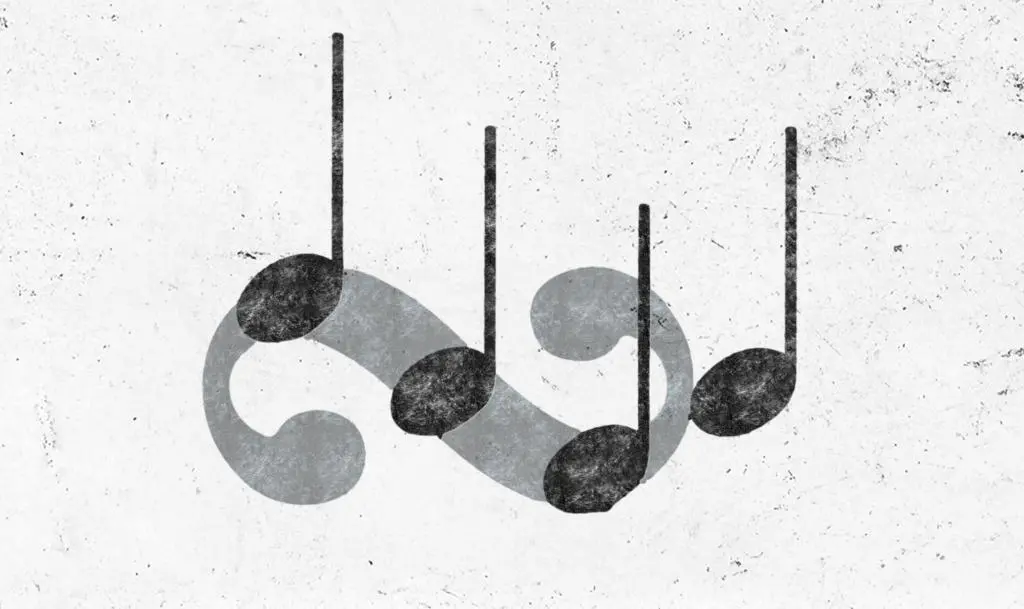
Variations on the Standard Turn
While the classic turn has a standard pattern, composers and performers have crafted variations that put a unique spin on this ornament.
Let’s look at some turn variations that alter its melodic contour and execution.
Inverted Turn
This variant reverses the sequence of notes, creating an inverted mirror image of the typical turn:
- First the note below the primary
- Up to the primary
- Then the note above
- Back down to the primary
The initial lower leap contrasts the standard upper start, lending an introspective tone.
Horizontal Turn
Rather than upper-lower-upper around the primary, this turn stays laterally on one pitch level, alternating between the main note and an adjacent note, like a mordent. The result is a horizontal oscillation in pitch rather than a vertical leap.
Offset/Displaced Turn
When placed between two notes, the turn is executed in the gap between the first and second notes, often near the end of the first note’s duration. This delayed timing contrasts the default placement directly above a primary note.
Composers combine these variations – inverted, horizontal, and displaced turns – to make the ornamentation unpredictable. The variations introduce welcome freshness while retaining the turn’s essential character.
Whether upright, upside down, or sideways, the cryptic S continues to hold boundless potential for melodic elaboration through an expanding palette of turn variations.

Executing Turns Musically
Seeing the turn symbol is one thing, but bringing it to life in music requires thoughtful execution. Let’s explore tips for a smooth and seamless performance.
The rapid tempo of a turn gives it a trill-like quality. The notes flutter fleetly to create a quick ornamental flourish.
However, the exact speed and timing of the turn sequence are open to interpretation. An energetic allegro passage may demand a brisk turn, while a soulful adagio could incorporate a more languid, deliberate execution. Musicians should tailor the pace to suit the overall mood and genre.
Becoming comfortable with executing turns takes practice. At first, go slow, firmly establishing the upper-lower-upper pattern around the main note. Once the sequence is concrete, build up speed gradually. Be sure to listen critically to how the turn integrates into the melody.
A seamless, polished turn will sound like a natural extension of the line, informing the melody without disrupting its flow. Ideally, the ornamental notes should lead melodically in and out of the primary note, avoiding any jagged leaps in the sound.
With their fleeting nature, turns fly by in the blink of an ear. But those microseconds matter, requiring finesse and precision from the performer. When a turn receives care and attention, it becomes a delightful sonic flourish adding artistry and elegance to the music.
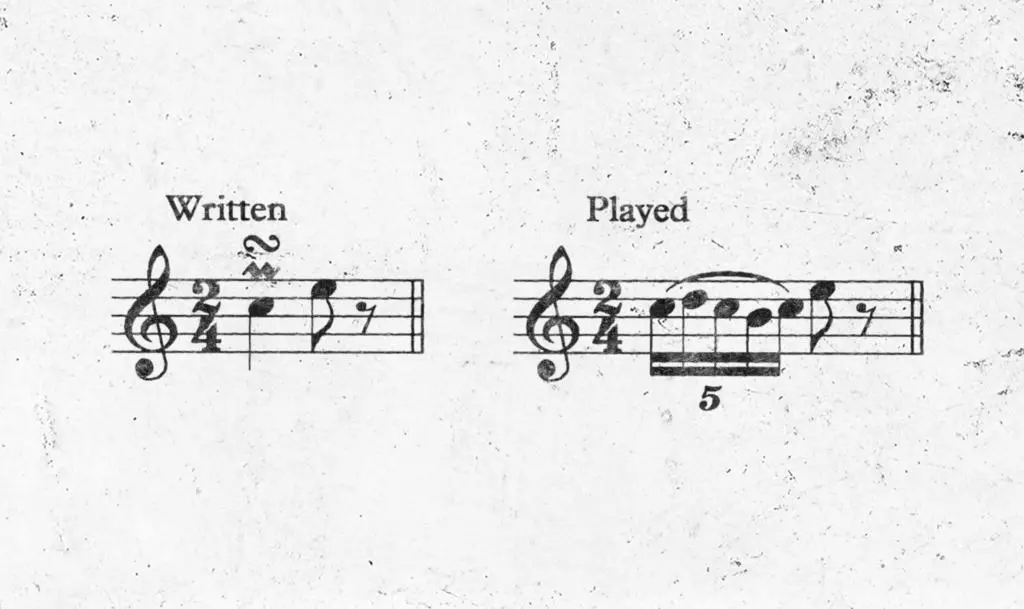
The Relationship Between Turns and Mordents
Turns have a close cousin in the form of the mordent – a similar melodic ornament with its own distinct flavor. Let’s explore the parallels and differences between these embellishing figures.
Whereas the turn uses four notes, the mordent only has three – essentially a truncated turn starting right on the main note. The sequence comprises:
- The main note
- The note above or below
- Back to the main note
This swift alternation between the primary note and upper/lower neighbor creates a trill or wavering effect. The mordent serves as a sort of miniature turn, providing a quick back-and-forth ornamental brushing against the melody note.
Just as turns have inverted forms, so do mordents, using the note below rather than above. Upper and lower mordents lend contrasting moods, the former having a brighter quality, the latter more brooding.
Composers often use turns and mordents in conjunction to provide melodic variation. A turn may grace one phrase, while a mordent animates the next. This variety showcases the symbols’ shared purpose while highlighting their differing flavors.
Both ornaments embellish through brief tonal detours from stability. But where the turn makes a complete four-stop melodic loop, the mordent simply leaves and returns. Together, these quicksilver symbols offer versatile options for spirited melodic enhancement.
In-Depth Look at the Mordent
The world of music is a treasure trove of fascinating symbols and notations, each with their own distinct purpose and meaning. One such musical gem is the mordent. Although it shares some similarities with the turn, it carries its unique rhythmic flair and melodic character.
What is a mordent and how is it notated in comparison to a turn?
At first glance, a mordent might appear to be a mysterious emblem in the sheet music – resembling a short squiggle or a “sideways S” akin to a turn. However, while both the mordent and turn involve rapid movement around a primary note, their note sequences and musical impacts differ. The mordent creates a quick vibration around the main note, making it a charming decorative feature that adds a playful touch to a melody.
What is the sequence involved in playing a mordent?
Performing a mordent involves a sequence of three notes: the primary note, the adjacent note (either above or below), and then a return to the primary note.
It’s like a brief echo or ripple, bouncing off the main note to generate a captivating sonic effect. If you imagine a stone thrown into a calm pond, the mordent would be the initial splash and the immediate ripple that follows – quick, but significant enough to catch the eye (or ear, in this case).
How are upper and lower mordents used in music?
This brings us to another point of intrigue – the upper and lower mordents. As the names suggest, these two variations are distinguished by whether the ripple note is above or below the primary note. In an upper mordent, the secondary note is one step higher than the primary note. This lends an upbeat, ascending quality to the mordent. Conversely, in a lower mordent, the secondary note is one step below, giving the mordent a slightly descending, introspective tone.
What sets mordents apart is their ability to add a nuanced, often surprising, touch to the music without drastically altering its overall flow. Whether used in a fast-paced fugue or a languid lullaby, mordents have the unique ability to enhance a melody’s charm, while ensuring it remains grounded in its primary note. It’s a delicate balance that, when executed correctly, can truly bring a piece of music to life.
Notating Turns and Mordents in Musical Scores
The cryptic beauty of turns and mordents lies in how their sound complexity can be distilled into simple symbolic shorthand. Let’s decode the notation logic behind these ornaments.
The standard turn is notated as a sideways S curve above or between notes on the staff. This clearly conveys the rapid up-down melodic sequence.
An inverted turn uses the same symbol but with a vertical line through the center. This line signals the reverse order starting below the main note.
Mordents also utilize the sideways S shape, but without the trailing downward curve. The short single swoop aptly depicts the quick lower-upper-lower or upper-lower-upper mordent pattern.
Again, inverted mordents feature a dividing vertical line denoting that lower note comes first.
The positioning of the symbol indicates timing – above a note, a turn will precede it; between notes, it is executed within that space.
With just subtle variations of a basic S shape, composers efficiently convey precise ornamental directions. In mere seconds, performers can comprehend the required embellishment and bring it to musical life.
By understanding the concise syntactic logic behind these symbols, musicians can confidently interpret the shorthand at sight, unlocking a world of melodic elaboration through graceful tonal turns and mordents.
| Music Symbol | How To Play | Definition |
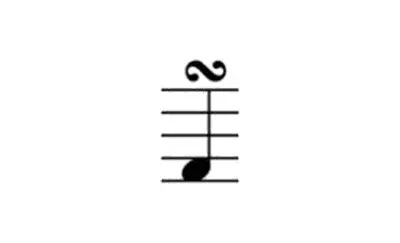 | 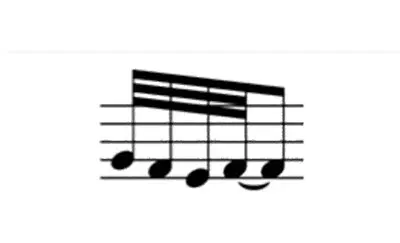 | Turn: A musical embellishment where the performer plays the note above the written note, followed by the written note itself, the note below, and concludes with the written note again. |
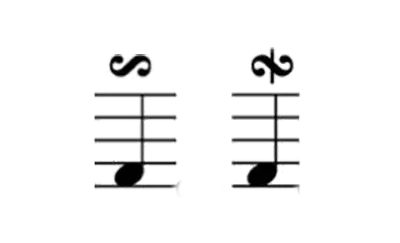 | 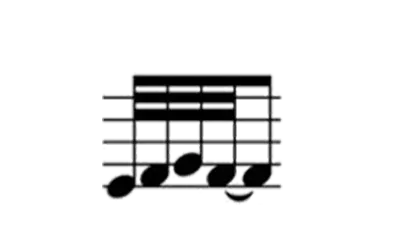 | Inverted Turn: A musical ornamentation where the sequence begins with the note below the written one, followed by the written note, the note above, and concludes with the written note again. |
 | 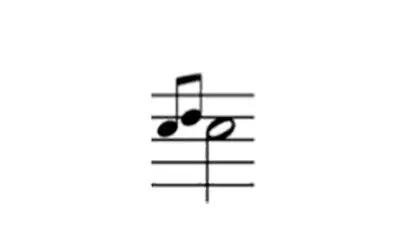 | Mordent: A musical ornamentation characterized by a brief trill, where the performer rapidly plays the succeeding higher note once before returning to the original note. |
 | 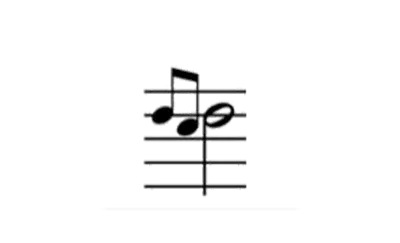 | Inverted Mordent: A musical ornamentation characterized by a rapid alternation to the note immediately below the written note before returning to the original note. |
Turns and Mordents in Action Across Musical Genres
Turns and mordents may seem like abstract symbols, but they come alive to create tangible musical effects that have captivated composers and performers across styles and eras. Let’s explore some iconic examples of these ornaments in action.
Bach’s Goldberg Variations provide an exceptional study of turns and mordents in action. This seminal work, composed of an aria followed by 30 variations, is a veritable playground of musical ornamentation, with turns and mordents featuring prominently. For instance, Variation 7, marked “al tempo di Giga”, showcases several instances of turns. These rapid note sequences beautifully accentuate the lively, dance-like nature of the variation, giving the melody an added layer of complexity and charm.
The mordent is another ornament that Bach employed frequently. An excellent example of this can be found in his Cello Suite No. 1 in G Major, specifically in the prelude. Here, mordents punctuate the flowing melody at key moments, serving as springboards that launch the listener from one musical phrase to the next. The result is a wonderfully dynamic piece that ebbs and flows with rhythm and emotion.
Another worth-mentioning piece is Chopin’s Nocturne in E-flat Major, Op. 9, No. 2. Here, Chopin uses turns to add a distinct lyrical quality to the piece. The turns seem to dance around the main melody, enhancing its emotional depth and leaving the listener with a sense of bittersweet longing.
Beyond classical compositions, turns and mordents have remained relevant as expressive tools for performers across genres. Jazz musicians incorporate turns and mordents when improvising, relying on the spontaneous flair these additions provide. A slick upper mordent can inflect a melody with swing and vibrancy. Jazz saxophone legend Charlie Parker was renowned for his advanced use of rapid turns and trills to build intensity.
Pop vocalists may slide mordents and turns into sustained notes to introduce pitch fluctuations that demonstrate technical agility. The ornaments also allow for personal, in-the-moment stylization. A mordent can enable a singer to tease and bend a word with attitude and edge.
EDM producers have exploited the stuttering rhythmic effect of turns and mordents, automating them to create energetic drops and transitions. Their presence adds dynamism and forward propulsion, seeming to mimic electronic zaps and surges. DJs use these motifs to generate and release tension on the dancefloor.
Putting Turns and Mordents in Practice
Now that we’ve demystified these ornate symbols, how and when can you actually implement them to enrich your own musical creations? Here are some tips for effectively integrating turns and mordents into your playing and compositions.
When first attempting turns/mordents, take it slowly, carefully alternating the upper-lower-upper pattern around the main note until it feels natural. Listen closely for examples in sheet music or recordings, paying attention to timing and phrasing.
Consider the context – are you employing the ornament in a chordal accompaniment or a solo melodic line? What is the overall mood, tempo, and style? Tailor your execution accordingly.
Turns and mordents can highlight peaks in a melody, adding interest to long held notes or syncopated rhythms. They also provide nice bursts of flair at cadence points, like a musical exclamation mark.
For building tension, place turns on a note moving towards an unstable harmony. The ornamental clash serves as dissonance that pulls the listener along. Carefully timed turns and mordents will imbue music with momentum and directionality.
As you become more comfortable, get creative – try inventing your own variations and combinations to develop a unique ornamental style. Most importantly, let your musicality shine through, using these expressive symbols to maximum melodic effect. With practice, that elusive sideways S will become an indispensable asset in your artistic toolkit.
Final Thoughts on S Music Note Symbol
The world of music is vast and vibrant, constantly evolving yet rooted in age-old traditions. As we dive deeper into the complexities of this art form, we come across myriad symbols, signs, and notations.
One such symbol is the sideways ‘S’, a seemingly cryptic sign that opens doors to a whole new dimension of melodic embellishment in the form of turns and mordents.
Understanding these musical ornaments and their usage is not just a matter of academic interest or historical knowledge. It has significant practical implications for anyone involved in the creation, interpretation, or appreciation of music.
The sideways ‘S’, or the turn, along with mordents, carry with them the legacy of the Baroque period and beyond, infusing music with rich ornamentation and expressive depth. They serve as bridges between notes, enhancing the melodic flow and creating musical tension and release that resonate with our innate human emotions. They add a layer of sophistication to compositions, bringing about an interplay of predictability and surprise that captures listeners’ attention.
For budding musicians, composers, or even seasoned professionals, mastering these ornaments can be a game-changer. They open up a new palette of musical expressions to color your melodies, providing you with more tools to convey your musical ideas and emotions. They are like the spices in a chef’s kitchen, allowing you to season your musical piece just the way you envision it.
If you’re looking to experiment with these musical ornaments in your own compositions or performances, start small. Choose a simple melody and see how it transforms when you add a turn or a mordent. Listen carefully to how it affects the overall mood and flow of the piece. Practice different variations and sequences, and pay attention to how they fit within different musical contexts. Most importantly, let your ear be your guide. If it sounds good, it probably is!
Remember, music is a language, and like any language, it’s all about communication. Whether it’s the sideways ‘S’, the turn, the mordent, or any other musical symbol, they’re all means to an end – a way to express, connect, and communicate. And the more fluently we speak this language, the more effectively we can share our unique musical stories.
Further Reading
For those interested in delving deeper into the intricacies of musical notation and symbols, the following resources provide comprehensive insights:
- Wikipedia – Musical Notation: An extensive overview of the system used to visually represent aurally perceived music through symbols. Read more.
- Wikipedia – List of Musical Symbols: A detailed list of various musical symbols used in notation, providing a deeper understanding of each symbol’s significance. Explore the list.
- Britannica – Other Systems of Notation: An exploration of alternative systems of musical notation beyond the traditional Western system. This article delves into the diverse ways music has been represented across cultures and eras. Learn more.
These resources offer a wealth of knowledge for both beginners and seasoned musicians looking to expand their understanding of musical notation.

